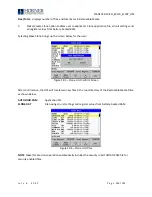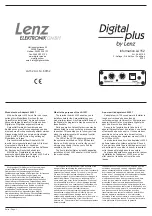
MAN1029-10-EN_EXL10_XL10P_UM
J u l y 6 , 2 0 2 2
P a g e 171 | 195
CHAPTER 20: MODBUS COMMUNICATIONS
20.1 Modbus Overview
For complete Modbus instructions, please refer to the Help file in Cscape
.
Modbus (serial) is a popular, de-facto standard protocol that allows industrial devices from multiple
manufacturers to easily share data in real-time. For Modbus serial communications, the EXL10/XL10
PRIME can act as either a Master or a Slave.
Modbus protocol (serial) allows for one master and multiple slaves. The master always initiates the
conversation by sending a request to a particular slave. Only the addressed slave will send a response
when the request is completed. Should the slave be unable to complete the request, it returns the
appropriate error response. Should the slave be unable to respond, the master’s timeout timer expires
to provide an indication of
No Response
.
20.2 Modbus Slave Overview
For complete Modbus Slave instructions
,
please refer to the Help file in Cscape
.
The Modbus slave function block, when used with the appropriate Modem and/or Open function blocks,
allows the primary serial port on the controller to act as a Modbus slave. The Modbus function supports
both ASCII and RTU modes of operation across a range of baud rates and protocol frames. Also
supported is port activity status, an inactivity timer, support for call-on exception, and support for store
and forward (repeater) operation for radio modems.
The
describes the supported Modbus Commands as well as the Modbus
Map for EXL10/XL10 PRIME References (%R, %M, etc.).















































